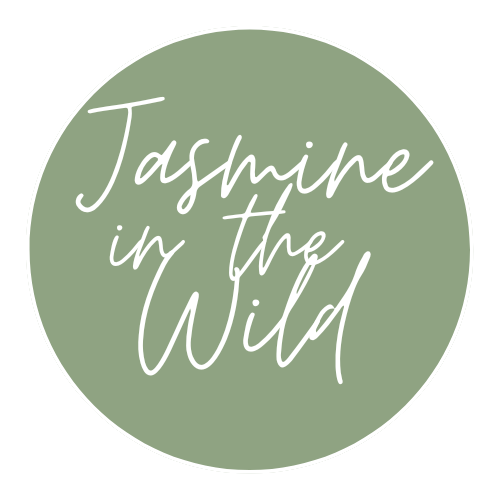I remember the first time I told family and friends that I wanted to go hiking and camping. “Isn’t that a white thing?” They would respond. Our community had been given this narrative that Black people didn’t go outdoors. However, after entering the hiking community, I realized that belief couldn’t be further from the truth.
How It Started
Black Americans had always been “outdoorsy.” They were forced to learn much about the colonies (and later country) that they were forced to help create and tend to through agriculture.
From 1810 to 1850, approximately 100,000 enslaved people were ushered by abolitionists such as Harriet Tubman from the American South to the North. They traveled by boat, wagons, and by foot to freedom. However, the majority of Black people, both free and enslaved, still resided in the south.
Many Black Americans were tasked with protecting the nation's westward expansion by building roads and participating in significant military actions, such as the Red River War from 1874 to 1875 and the Battle of San Juan Hill during the Spanish American War in 1898. Buffalo Soldiers, as they were nicknamed, also served among the first national park rangers.
There were plenty of Black Americans around the country responsible for environmental conservation and accomplishments in the outdoors. George Washington Carver is regarded as one of America’s greatest agricultural researchers and educators. His innovations in the field of crop rotation are considered breakthroughs in resource conservation by preserving soil and making farms more productive.
Explorer Matthew Henson was the first to set foot on the North Pole. After seven attempts to traverse Greenland and reach the North Pole, Robert Peary, four Indigenous natives from Northern Canada, and Henson successfully reached the North Pole on April 6th, 1909. However, due to the dismissive period of African American exploration, Henson would be widely dismissed as the first explorer to reach the North Pole until subsequent trek analysis years later.
A Change In Narrative
The Great Migration, sometimes known as the Great Northward Migration or the Black Migration, was the movement of 6 million African Americans out of the rural Southern United States to the urban Northeast, Midwest, and West between 1910 and 1970. Black Americans sought more urbanized landscapes in search of new opportunities and a better life. However, non-Black Americans didn’t care for the changing landscape and fought to protect the way of life that they were used to living.
In Monroe, Georgia, on July 31, 1946, The Savannah Tribune reported a “mass lynching,” in which a “mob of 20 or more men, who lined up two Negro men and their wives in the woods … shot them to death.” Events like this happened nationwide as Black Americans bought homes, built new jobs, and began enriching communities. Laws during this time barred Black Americans from most public community spaces and segregated them into poorly managed areas. The Jim Crow era changed Black Americans’ relationship with the outdoors, often erasing it entirely.
Up until very recently in our country, the majority of Black Americans were not allowed to access National Parks, local parks, pools, campgrounds, beaches, trails, or many other places the same way white Americans have always been able to despite being the first national park rangers.
Places Black people were allowed to swim were often more dangerous places, such as the rushing waters of the Mississippi River. Drowning was a frequent occurrence, and many people simply avoided swimming because it was too dangerous. Many simply never learned how to swim, leading to decades and generations of Black Americans being forced out of nature.
Still Standing In Nature
Black Americans were still involved in the outdoors despite being violently forced out of nature. Hazel M. Johnson, the “mother of the environmental justice movement,” pointed out that the people who live, work and play in America’s most polluted environments are commonly people of color and the poor. Dr. Robert Bullard often referred to as the “father of the environmental justice movement,” authored numerous books on the prominence of waste facilities in predominately African-American areas nationwide.
Dr. John Francis combated the negative effects of fossil fuels by becoming “the Planetwalker.” Hattie Carthan, nicknamed Brooklyn’s “Tree Lady,” helped plant 1,500 trees in her Bedford-Stuyvesant neighborhood of Brooklyn during the 1960s. Dr. Warren Washington was just the second African American to earn a doctorate in atmospheric sciences before joining the National Center for Atmospheric Resources (NCAR) as a scientist in 1963. He joined a team that developed groundbreaking computer models that use the laws of physics to predict future states of the atmosphere, helping generations of scientists better understand the ways in which the climate is changing.
Black Outdoorspeople Today
Today, there are many groups dedicated to bringing Black Americans back outdoors for recreation. Rue Mapp developed Outdoor Afro in Oakland, Calif., in 2009, and it has since grown to a national nonprofit with a leadership team of more than 100 individuals in 56 U.S. cities. Robert Taylor was the first Black hiker to finish both the Appalachian Trail and the Pacific Crest Trail, where he endured several racist encounters, according to an interview he gave Backpacker in 2000. He remains an inspiration to young hikers across the country.
I had the honor of participating in a local Unity hike organized by Black Men Hike LA in collaboration with Black Girls Trekkin, Blaque Girls Hike, The Honey Block, Black Men With Gardens, and SoCal Outdoor Black Adventures (SCOBA) recently. These are just the tip of the iceberg of Black-led organizations out there bringing Black people back into the outdoors, and my wish is for more organizations to pop up around the world and for each of them to grow. The only way that we can continue this trend of actually making the outdoors for everyone is by telling our stories, knowing our history as a country, and bringing more people outside together.


